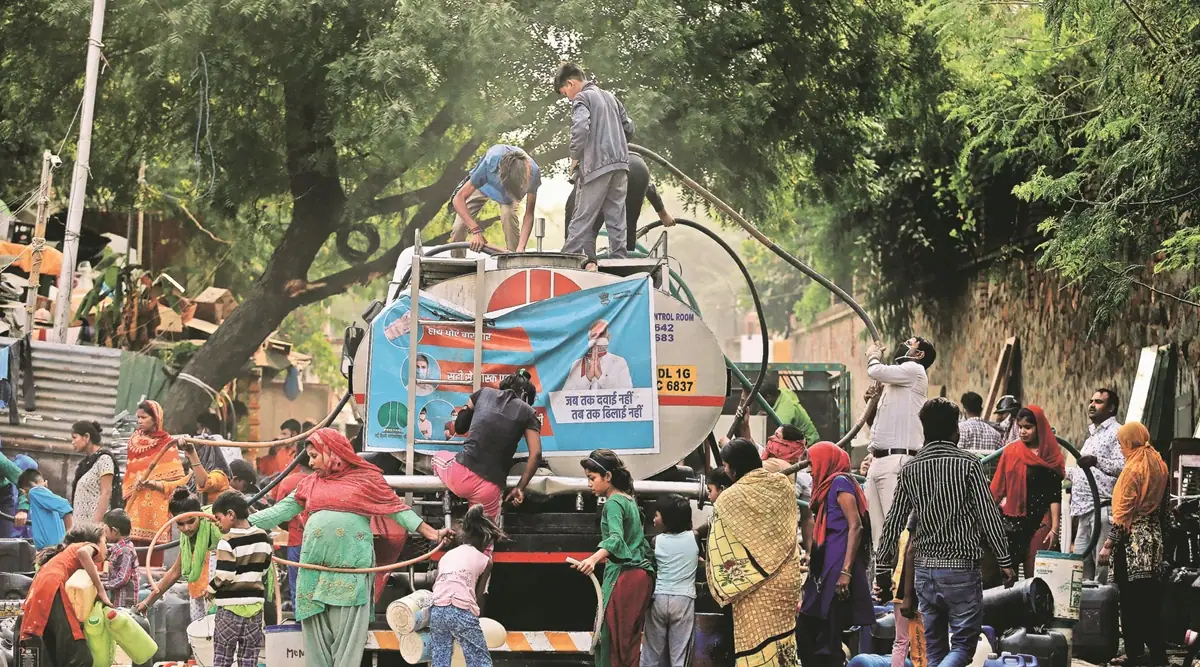Five out of Delhi’s 11 revenue districts — New Delhi, North Delhi, South Delhi, Southwest Delhi and Shahdara — are extracting more groundwater than is being recharged annually.
Of these, compared to the annual recharge, New Delhi had the highest annual extraction. The stage of extraction, which is the percentage of groundwater extracted against what was recharged, was around 121.41% in New Delhi. This was followed by South Delhi with 116.25%.
The data was presented in the Central Ground Water Board’s (CGWB) recently released National Compilation on Dynamic Groundwater Resources of India report for 2022.
A stage of extraction more than 100% is categorised by the CGWB as ‘overexploited’. The areas where groundwater is overexploited in New Delhi are Chanakyapuri, Vasant Vihar and Delhi Cantonment, while in South Delhi, the areas are Hauz Khas, Mehrauli and Saket, where extraction is more than annual recharge. In North Delhi, Narela was categorised as overexploited.
Close to half of Delhi’s total area — around 47.71% — has been categorised as ‘overexploited’. The area has been divided into 34 tehsils, and 15 of these are overexploited, while seven are ‘critical’, which means the stage of extraction is 90% to 100%.
Over the years
Delhi’s stage of extraction in 2020 was 101.4% (overexploited), which has now turned ‘critical’ (98.16%). The stage of extraction, according to the 2017 report, was even higher at 120%. The annual extraction, according to this year’s report, is 0.36 bcm (billion cubic metre), up from 0.29 bcm in the 2020 report, and same as 0.36 bcm in the 2017 report. The number of overexploited tehsils has fallen from 17 in the 2020 assessment to 15 this year, while the number of critical areas has remained the same at 7.
Of the districts, four are ‘critical’ — East, Northeast, Southeast and West Delhi. Areas categorised as critical include Sarita Vihar, Defence Colony, Kalkaji and Mayur Vihar.
Much of the groundwater in Delhi, around 80%, is being extracted for domestic purposes, while around 20% is being used for irrigation.
According to the data, over-extraction of ground water is not the only problem. Some areas, including Defence Colony and Seelampur, were also found to be affected by arsenic, which can be toxic. Of the tehsils, salinity was an issue in 14, including Punjabi Bagh, Rajouri Garden, Vasant Vihar, Rohini, Patel Nagar and Saraswati Vihar.
The report indicated that both groundwater recharge and extraction have seen an increase in Delhi as compared to 2020.
The report noted that the overexploited assessment units are mostly concentrated in the northwestern parts of the country — Delhi, Punjab, Haryana and western Uttar Pradesh — where “even though the replenishable sources are abundant, there have been indiscriminate withdrawals of groundwater leading to over-exploitation”.
Delhi’s stage of extraction in 2020 was 101.4% (overexploited), which has now turned ‘critical’ (98.16%). The stage of extraction according to the 2017 report was even higher at 120%. The annual extraction according to this year’s report is 0.36 bcm (billion cubic metre), up from 0.29 bcm in the 2020 report, and same as 0.36 bcm in the 2017 report.
The number of overexploited tehsils has fallen from 17 in the 2020 assessment to 15 this year, while the number of critical areas has remained the same at seven.
The report attributes the increase in extraction to the availability of data. Data of around 12,000 private tubewells registered with the Delhi Jal Board (DJB) has been incorporated in this estimation, it noted. On the increase in the annual recharge or the extractable groundwater, from 0.29 bcm in 2020 to 0.37 bcm this year, the report attributed it to an increase in piped water supply resulting in “return seepages”.
For more information call us at 9891563359.
We are a group of best insurance advisors in Delhi. We are experts in LIC and have received number of awards.
If you are near Delhi or Rohini or Pitampura Contact Us Here

